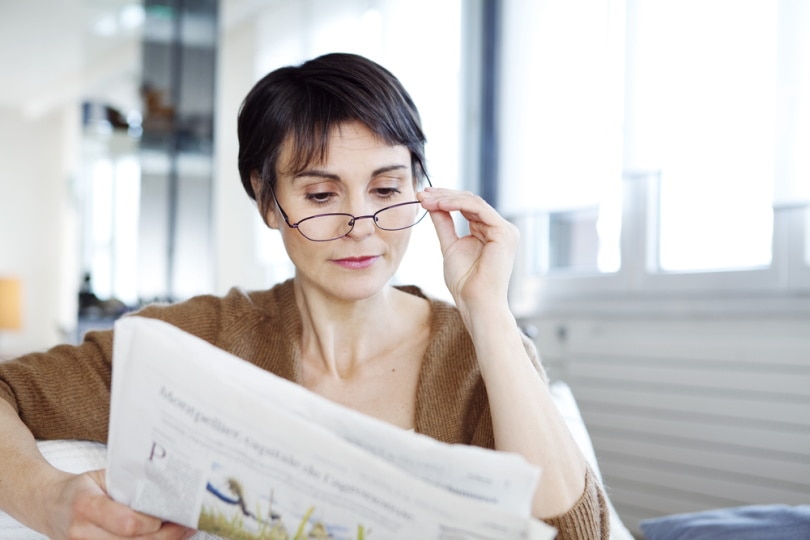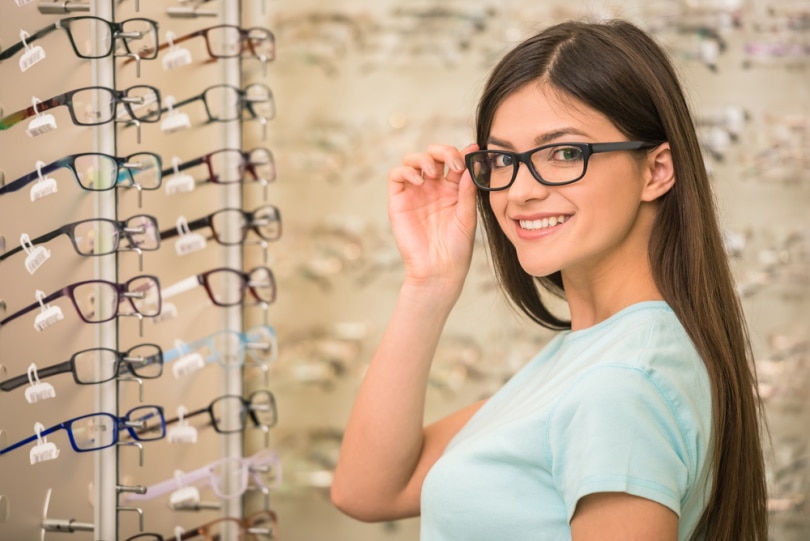How Do Reading Glasses Work? What You Need to Know!
Last Updated on

It is believed that eyeglasses were invented all the way back in the 13th century, though there is debate about the exact date. Even though reading eyeglasses have been around for a long time, most people still don’t understand how the technology works.
To learn how reading glasses work, keep reading. This article explains the devices so you can determine if you need reading glasses, and if so, which reading glasses you should get. Let’s get started.

How Does It Work?
The technology behind reading glasses is relatively simple. Reading glasses use magnified lenses to take the strain off your eyes. Because of these lenses, the glasses enlarge whatever you are looking at, making it easy to see. Due to this design, reading glasses are specifically designed to increase short vision.
Reading glasses are able to magnify small print because they use a type of convex lens. Convex means that the lens bends outwards. Because of this convex shape, light hits the glass at an angle and refracts towards the lens’ center. This allows the light to converge to create a clearer image.
This technology is specifically designed to help individuals with presbyopia. Individuals with presbyopia have an issue with refraction, not vision itself. Whenever the glasses refract the light towards the center, the presbyopia is corrected, and you will be able to read or see small print again.

What Are the Different Types of Reading Glasses?
There are different types of reading glasses available. It’s important to know the most common types of reading glasses so you can select the best product for your vision.
Fully Magnified Readers
Standard reading glasses are called fully magnified readers. These glasses allow you to choose the magnification throughout the lens. These glasses work well if you only wear the readers whenever you are reading and plan to take them off when not needed.
Bifocal Readers
Bifocal readers include lenses where only the bottom part is magnified. The top part is unmagnified. Because of this design, you can look down to magnify small print, but you don’t have to take off the glasses to see long distances. Just look through the top part of the lens, and you can see it normally. These glasses are for individuals who need a fix-all solution to their vision.
Readers by Style
Fully magnified versus bifocal readers are different in terms of the lens. You can also select different readers based on the frame style. The frame style doesn’t impact the visibility of the glasses as much, but they can allow you to get glasses that match your style. Some of the most common frames include full frames, half frames, rimless, semi-rimless, and polarized readers.
Occasionally, you can also find readers that have additional protection, such as anti-reflective technology or blue light glasses. These sorts of glasses will maximize your vision in specific reading scenarios, such as reading on a computer or digital screen. These readers are often called computer glasses.

Where Is It Used?
Readers are normally used in two scenarios. The first is for individuals who get eye strain when reading items up close. The second is for individuals who suffer from something called presbyopia. The vast majority of reading glasses are used by individuals who have presbyopia.
Presbyopia is a common condition that middle-aged and older adults suffer from. It is a refractive error that occurs whenever the lens makes it more difficult for the retina to focus light correctly. When the light does not focus correctly, it is difficult to see things up close. With reading glasses, this refractive error is corrected since the lens forces the light back to the center of the eye.
Advantages of Reading Glasses
The biggest advantage of wearing reading glasses is that you do not have to suffer while reading or looking at things close up. The reading glasses improve your vision, so you don’t have to strain your eye. As such, you can enjoy reading and looking at small items without experiencing headaches, eyestrain, and other uncomfortable symptoms.
Depending on your style, reading glasses can also help you achieve the look you are looking for. Because reading glasses come in so many styles today, you can find a pair that not only matches your style but completes it.

Disadvantages of Reading Glasses
Whenever you purchase a good pair of reading glasses suited for your eyes, the disadvantages are minimal. Although the glasses may get in the way or make you feel dorky, reading glasses don’t offer any true disadvantages if you truly need them.
However, selecting cheaply made glasses may be a waste of money. They don’t correct the refraction issue. Instead, they just magnify the print, sidestepping the issue entirely.
Something else to consider is that reading glasses are not designed for individuals with bad vision. It simply helps to correct presbyopia. If you suffer from poor vision, especially at long distances, reading glasses are not going to help you. Instead, you will need to talk to a doctor about getting prescription eyeglasses. Do not try to self-medicate with readers if you are truly having trouble seeing.
Frequently Asked Questions (FAQs)
Can I wear reading glasses if I don’t need them?
Yes. You can wear reading glasses even if you don’t need them. Unlike prescriptive glasses, reading glasses do not correct your vision, which means they will not alter your vision after you take them off.
Can you wear reading glasses all the time?
It is not recommended to wear reading glasses all the time. Because of the lens shape, reading glasses can negatively impact your long-distance vision while you are wearing them. Just take the reading glasses off whenever you need to utilize your long vision to fix the problem.

How do I know if I need reading glasses?
Individuals who suffer from eye strain, blurry vision, and known presbyopia will benefit from reading glasses. Some other signs that you may need reading glasses include holding objects up close to see them, frequent headaches, and constantly looking for ways to increase light.
How are readers different from prescription glasses?
Readers are specifically designed for individuals who suffer from presbyopia or related conditions. With these conditions, you don’t need glasses or vision aid all the time. Prescription glasses, in comparison, are designed for individuals who have poor eyesight all around and need aid to see as normal.
How do you know what strength reading glasses to get?
Reading glasses typically come in increments of +0.25 and start at +1.0. The further out you have to hold your book when reading, the stronger glasses you will need. It’s best to sample the glasses before buying them to ensure you get the best strength.


Conclusion
If you are suffering when trying to read small print up close, you might need reading glasses. Especially if you have a known condition called presbyopia, reading glasses can help counteract the problem so that you can see things up close clearly once again.
Although readers are great for individuals who only suffer from vision problems when reading up close, they aren’t right for everyone. If you suffer from long-distance blurriness or lack of vision at all times, it’s best to see an optometrist. The optometrist will be able to prescribe prescription eyeglasses that can help you see throughout the entire day.
Featured Image Credit: Image Point Fr, Shutterstock
About the Author Robert Sparks
Robert’s obsession with all things optical started early in life, when his optician father would bring home prototypes for Robert to play with. Nowadays, Robert is dedicated to helping others find the right optics for their needs. His hobbies include astronomy, astrophysics, and model building. Originally from Newark, NJ, he resides in Santa Fe, New Mexico, where the nighttime skies are filled with glittering stars.
Related Articles:
Can You Use Binoculars to Look At Stars? How to Choose the Right Pair
How to Clean a Refractor Telescope: Step-by-Step Guide
How to Clean a Telescope Eyepiece: Step-by-Step Guide
How to Clean a Rifle Scope: 8 Expert Tips
Monocular vs Telescope: Differences Explained (With Pictures)
What Is a Monocular Used For? 8 Common Functions
How to Clean a Telescope Mirror: 8 Expert Tips
Brightfield vs Phase Contrast Microscopy: The Differences Explained
